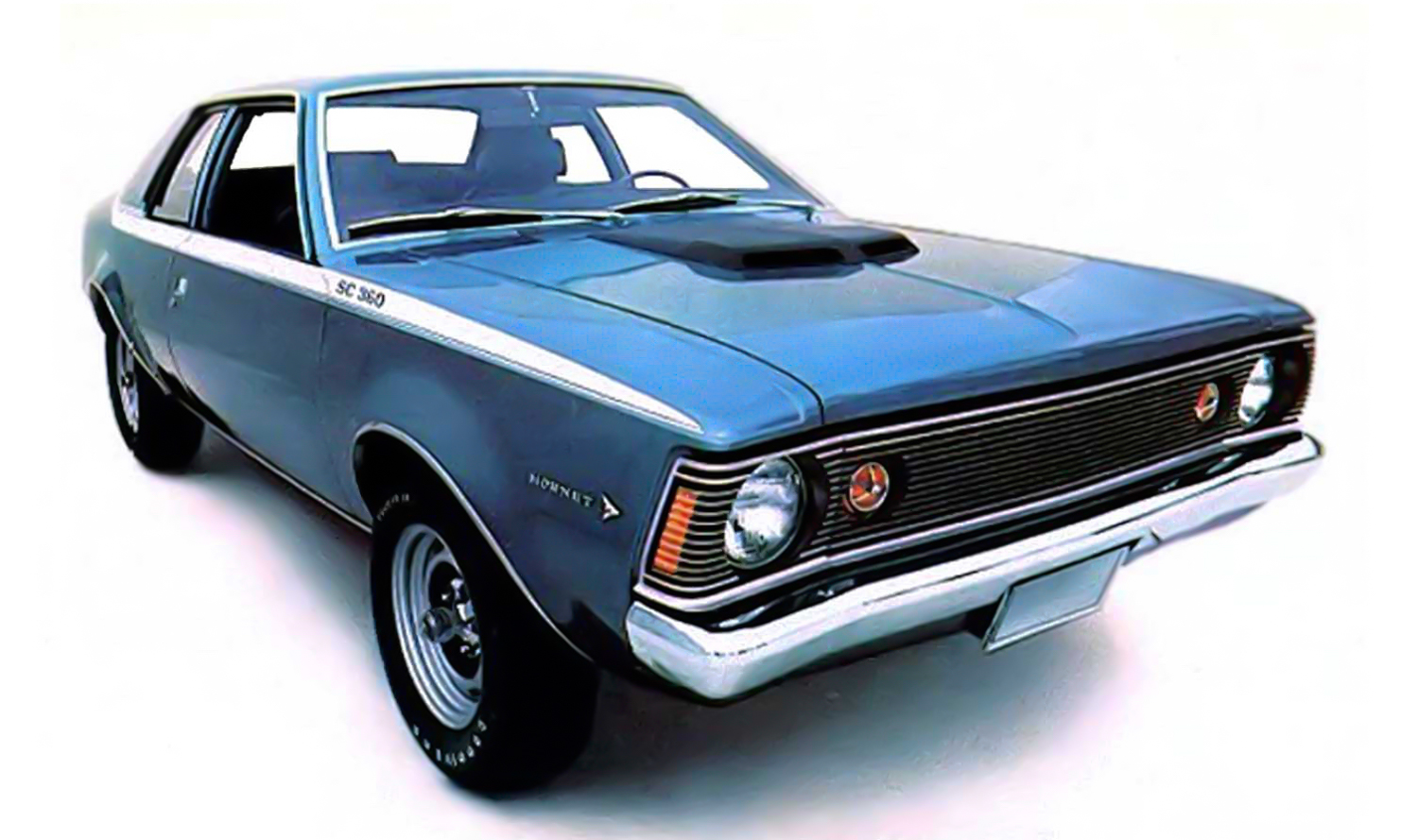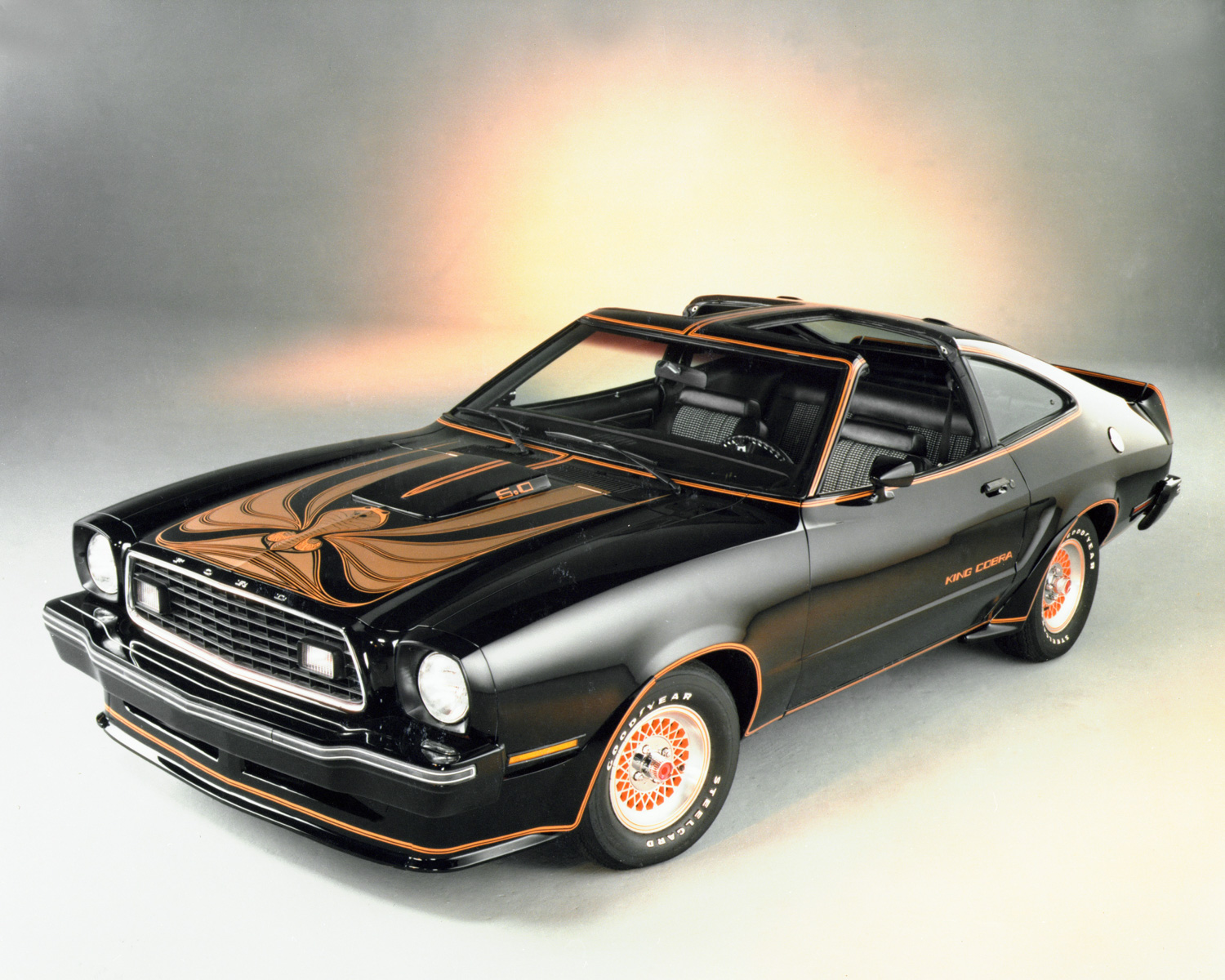5 one-year-wonder muscle cars from the Malaise era
The 1970s marked a particularly grim time for high-performance cars. The muscle car boom peaked at the start of the decade, but soaring insurance rates, tightening emissions standards, and the gas crisis brought down the curtain almost immediately thereafter. Despite the headwinds, Detroit didn’t want to quit the category and kept taking stabs at it. Sadly, most of their attempts were weak or short-lived. These five cars came and went in a single model year, making them the Malaise era’s one-year wonder muscle cars.
1971 AMC Hornet SC/360

With its 390-cubic-inch V-8 and red-white-and-blue color scheme, the SC/Rambler of 1969 caused a stir, so AMC tried again with the Rambler’s replacement, the Hornet. This time, AMC’s compact got the 360-cubic-inch engine, with a gross horsepower rating of 245 (2-bbl) or 285 (4-bbl).
The SC/360 also came with a front sway bar and slotted mag-style wheels with white-letter tires. The optional Go-Package was a must-have at $199, and most SC/360s were so equipped. It included the 4-bbl carb, dual exhausts, and a functional hood scoop. It also opened up the option of a four-speed stick, and added the Handling Package and a tachometer.
Visually, the SC/360 ditched the bold tri-color paint scheme that marked most SC/Ramblers, opting instead for a simple beltline stripe that wrapped over the trunk lid along with a red filler panel between the taillights. In all, it wasn’t enough for the model to stand out from a sea of grandma-spec Hornets. AMC sold just 784, half as many as the SC/Rambler. Given that AMC had hoped for something closer to 10,000, it’s no surprise AMC dropped the SC/360 after the ’71 model year.
1977 Chevrolet Monza Mirage

Despite the application of 14 plastic body add-ons and a name that echoed the IMSA-winning racers of the day, the performance of the Chevy Monza Mirage was mostly illusory. The Mirage was a factory option (#ZX1, $115), and could be had on any Monza 2+2; the only requirement was white paint. That means you could get even the base Iron Duke four-cylinder engine, although presumably most people opted for the 305-cubic-inch V-8—but even that brought only 140 horsepower.
After assembly in Sainte Thérèse, Quebec, GM sent the cars to Michigan Auto Techniques of Grand Rapids for the Mirage makeover. The body panels, decals, and blackout grille and headlamp surrounds comprised the entirety of the Mirage package, although Chevrolet recommended a few extras: the 305-cubic-inch V-8, heavy-duty suspension, white-letter radial tires, body-color outside mirrors, sport steering wheel, and special instrumentation. The production run of 4057 cars proved more than enough, and the model remains uncherished today.
1978 Dodge Aspen/Plymouth Volaré Street Kit Car
Even an association with The King, Richard Petty, via a giant “43” graphic on the doors and roof couldn’t raise the profile of these hotted-up—okay, mildly warmed-up—Aspens and Volarés. The two brands offered a parallel hierarchy of performance-themed option packages, with the Super Coupe and the Street Kit Cars at the top. (The name apparently was inspired by the kit cars Chrysler was selling to racers at the time.)
Chrysler’s 360-cubic-inch V-8 provided 175 horsepower, and a stiffened suspension rounded out the mechanical upgrades. But those visuals! The Plymouth was two-tone blue and the Dodge two-tone red. Aside from the “43” decals, the cars featured front and rear spoilers, tacked-on fender flares, quarter-window louvres, faux hood pins, windshield retention clips, rear window retention straps, and hood graphics trumpeting the engine displacement.
All for $1085. And yet, Mopar built just 247 Volaré Street Kit Cars and 145 Aspen versions. To be fair, the number might have been higher but Petty abandoned Chrysler products in 1978 (switching first to a Chevy Monte Carlo). That prompted Chrysler to quickly usher the model off stage—increasing the car’s rarity if not its value.
1978 Ford Mustang II King Cobra

A special Mustang representing the peak of the performance lineup is almost guaranteed a place in history—unless it’s the Mustang II King Cobra. The King Cobra (a $1253 option package) was exclusive to 1978. That was the last year of the Mustang II, before the all-new Fox-body Mustang would lead Ford’s Pony Car toward redemption. The King Cobra wasn’t quite so embarrassing as the Cobra II, a sticker-and-spoiler special that arrived on the scene for 1976. At least the King came standard with the 5.0-liter V-8. Cobra II buyers had to opt up to the V-8 from the standard 2.3-liter four-cylinder.
The King Cobra came with stiffer springs, a rear stabilizer bar, heavy-duty cooling, and adjustable dampers. The “King Cobra” graphics on the sides and rear spoiler weren’t as huge as those adorning the regular Cobra II, but the car clearly revealed Ford’s envy of the Pontiac Trans Am with its extra-large front air dam that wrapped around to the front wheel openings, rear fender flares ahead of the rear wheel openings, hood scoop, extensive pinstriping, and stylized Cobra hood graphic that owed a lot to the T/A’s screaming chicken.
The King was deposed with the arrival of the ’79 Mustang, but that hood decal would live on (as an option) for the standard Mustang Cobra.
1977 Pontiac Can Am

You may know the Pontiac Grand Am, and certainly the Trans Am, but how many remember the Can Am? For Pontiac’s ’73–’77 big-bodied generation of intermediates, the sporty offering initially was the Grand Am, which lasted through 1975. After skipping 1976, Pontiac came back with a new try at stoking the GTO embers: the ’77 Can Am.
Offered only in white with tri-color red-orange stripes, the Can Am featured black rocker panels, blacked-out chrome moldings, and white Rally II wheels. The cabin was upgraded with the Grand Prix’s instrument panel. Power came from the same 6.6-liter V-8 found in the Trans Am—or a 403-cubic-inch V-8 for California cars—topped by a shaker hood scoop. A Rally RTS handling package with front and rear stabilizer bars was also standard. Just 1377 were built, however, and when GM’s intermediates were downsized for 1978, the Can Am was gone, and the Grand Am returned.

